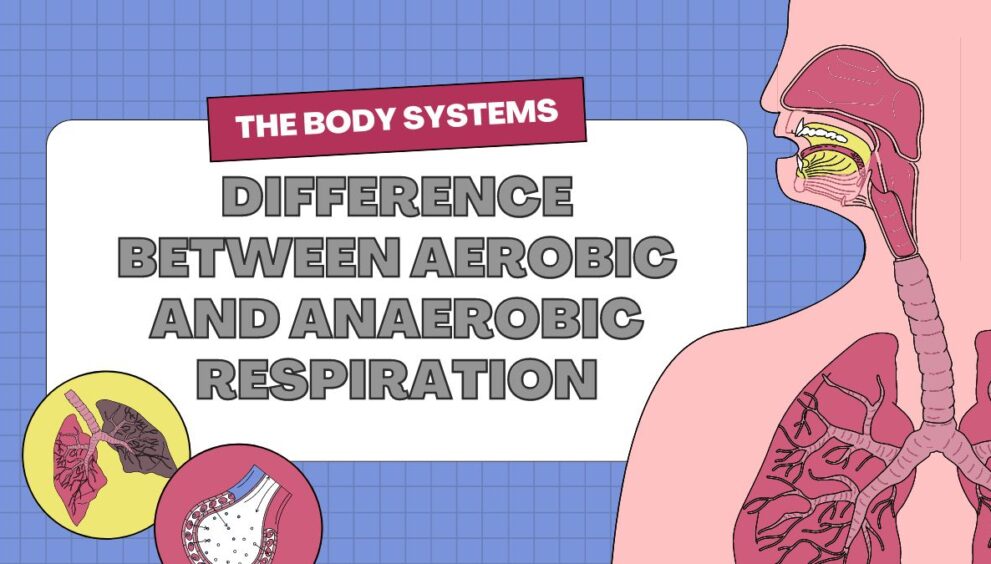Difference Between Aerobic and Anaerobic Respiration

The main difference between aerobic and anaerobic respiration lies in the presence of oxygen. Aerobic respiration requires oxygen, and occurs in the mitochondria, producing a large amount of ATP. In contrast, anaerobic respiration does not require oxygen and occurs in the cytoplasm, producing a small amount of ATP.
Table of Content
- Difference Between Aerobic and Anaerobic Respiration
- What is Aerobic Respiration?
- What is Anaerobic Respiration?
- Key Differences Between Aerobic and Anaerobic Respiration
Difference Between Aerobic and Anaerobic Respiration
For better clarity, let’s analyze the difference between aerobic and anaerobic respiration in a tabular format:
Must Explore: Difference Between Sperm and Semen
What is Aerobic Respiration?
Aerobic respiration is the process by which cells convert nutrients into energy in the presence of oxygen. This process involves several steps, including glycolysis, the Krebs cycle, and the electron transport chain.
Overall, aerobic respiration is an efficient way for cells to produce energy, yielding a high number of adenosine triphosphate (ATP) molecules.
Also Read: Difference Between Zygote and Foetus
What is Anaerobic Respiration?
Key Differences Between Aerobic and Anaerobic Respiration
Here are the key differences:
- Aerobic requires oxygen, while anaerobic respiration does not.
- Aerobic respiration occurs in the presence of mitochondria, whereas anaerobic respiration takes place in the cytoplasm.
- The aerobic respiration results in a high yield of energy (ATP), whereas anaerobic respiration yields a comparatively lower amount of energy.
- Aerobic respiration produces carbon dioxide and water as byproducts. In contrast, anaerobic respiration produces lactic acid or ethanol and carbon dioxide.
- Aerobic respiration is commonly found in higher organisms. Meanwhile, anaerobic respiration is prevalent in microorganisms and certain lower organisms.
Also Read:
Difference Between Open-Angle and Closed-Angle Glaucoma
Difference Between Permanent Teeth and Temporary Teeth
Difference Between Medical Hand Washing and Surgical Hand Washing
























































































































